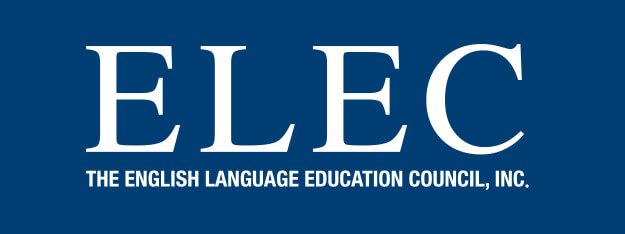
ライティングを授業に取り入れるコツ(避けるべき落とし穴)(3/3)
Alexis先生による、英語でライティングを教える効果的な方法のご紹介です。生徒が学びやすいフィードバックを提供するテクニックや、教師の負担を減らすコツについても触れています。全3回の連載、最終回です。どうぞお楽しみください。
Tips on Integrating Writing into the Classroom (and Some Common Pitfalls to Avoid) (3/3)
Provide efficient feedback
When it comes to this key stage, here are three important takeaways that I have learned over the years.
- Selectively mark students’ work
- Encourage self-correction
- Use a correction code
It is generally good practice NOT to mark every single error in the work students submit. This is time-consuming for teachers and an ineffective method of teaching students. Instead, focus on vocabulary and grammar that has been taught and, if necessary, recurring mistakes.
I personally find that one correction (maybe two if I feel it is necessary) per line is sufficient. Besides being less time-consuming to mark, students are far more likely to learn from a handful of carefully selected corrections than from a massive swathe of red ink (or whatever colour you choose to mark in). It can be demoralizing to receive work with an abundance of corrections, and narrowing the number makes it easier to draw students’ attention to the most important errors.
Encouraging self-correction has been shown to more effectively aid knowledge retention than when students are spoon-fed corrections. (Omaggio, 1986) *1 This form of feedback is more engaging and memorable, as students are actively involved in the progress. It requires students to work out how to correctly use a grammar point or word, so they have a better understanding of what went wrong and how it should be done. Contrast this with when students are simply handed back their work, corrections all done for them, and they passively glance over the mistakes and comments before putting their assignment away. It’s no surprise they keep making the same mistakes time and again.
Self-correction can be done in class as part of a group activity, and you can even make it into a game. I generally board some common errors, put students in pairs, and then have the pairs race each other to correct the mistakes. Once finished, I give feedback. The remainder of the errors I leave as homework, which is where an error correction key comes in handy.
An error correction key is a set of symbols used to show where and what type of a mistake has been made. Examples of potential symbols include S for spelling mistake, G for grammar mistake, WO for wrong order (of words) and ^ for missing words, but you can choose anything. You could even have students think up symbols of their own for you to use! Just remember to give your students copies of the correction key before returning assignments so that they understand what the symbols mean.
References:
*1 Omaggio, A. C. (1986). Teaching language in context: Proficiency-oriented instruction. Boston: Heinle and Heinle Publishers.
ライティングを授業に取り入れるコツ(避けるべき落とし穴) (3/3)
効果的なフィードバック
この重要な段階に関して、私が長年にわたって学んできた3つの重要なポイントをご紹介します。
・選択的に採点する
・ 自己添削を促す
・ 添削記号を活用する
学生が提出した課題のすべての誤りに印をつけることは、一般的に良い実践とは言えません。これは教師にとって時間がかかるだけでなく、効果的な指導方法でもありません。 代わりに、すでに教えた語彙や文法、そして必要であれば繰り返し見られる誤りに重点を置くようにしましょう。
個人的には、1行につき1箇所(必要であれば2箇所)の訂正で十分だと思います。採点にかかる時間が短縮されるだけでなく、生徒は大量の赤インクよりも、厳選された一握りの訂正から学ぶ可能性がはるかに高いです。 添削の数が多すぎると、やる気をなくしてしまうものです。数を絞ることで、最も重要な誤りに学生の注意を向けやすくなります。
自己添削を促すことは、訂正したものを学生に与えるだけの場合よりも、より効果的に知識の定着を助けることが示されています。(Omaggio, 1986)*1 このような形のフィードバックは、学生が積極的に学習プロセスに関与するため、より興味をそそり記憶に残ります。 文法事項や単語を正しく使うにはどうすればよいかを考えさせるので、何が間違っていたのか、どうすればよいのか、をよりよく理解することができます。対照的に、教師によってすべて添削された課題を返却され、学生はただ間違いやコメントに目を通して片付けてしまう_という方法では何度も同じ間違いを繰り返してしまうのは当然の結果といえるでしょう。
自己添削は、クラス内でグループ活動の一環として行うことができ、ゲーム形式にすることも可能です。私は大体、よくある間違いをいくつかホワイトボードに書き出し、学生を2人1組にして、間違いを正す競争をさせます。 終わったらフィードバックを行い、 残った間違いは宿題として出します。このときに役立つのが添削記号です。
添削記号とは、どこでどのような間違いがあったかを示すための記号です。 例えば、「S」はスペルミス、「G」は文法ミス、「WO」は語順間違い、「^」は抜けている単語を表しますが、どのような記号を選んでもかまいません。 学生自身に記号を考えさせることもできます! ただ、学生が記号の意味を理解できるように、課題を返却する前に添削記号一覧のコピーを渡すことを忘れないようにしましょう。
参考文献:
*1 Omaggio, A. C. (1986). Teaching language in context: Proficiency-oriented instruction. Boston: Heinle and Heinle Publishers.
➤次回は、Andrew先生による「基本的な調音音声学に基づくIPA子音の指導法」をご紹介します。お楽しみに!
Alexis先生の他の記事はこちら
ELEC英語講師陣 紹介ページはこちら
